“Everyone needs three square meals a day.”
“Breakfast is the most important meal of the day.”
If you found yourself nodding in agreement to either of these statements, you are obviously not from Spain. Food is, however, a very big deal in Spain. Evidence for how much Spaniards love food is the fact that they eat more times throughout the day than most people around the world!
We’re doing our best to assimilate.
Mealtime is taken seriously here – all five of them! Yep, that’s right. There are five meals a day in Spain. (Some even say there’s a sixth meal.) Seem crazy? The key to all this eating is understanding that not every meal is a feast. However, every meal is very much a social experience and reflects the Spanish approach to life: savor each moment, take time to be with friends and family, and RELAX! Munching a sandwich on the go is not a thing.
So, what are the five Spanish meals?
El Desayuno – Breakfast
Breakfast is decidedly NOT the most important meal of the day in Spain. Rather, it is quick and simple. A typical breakfast in Spain, from about 7:00 to 8:30 AM, always includes café con leche (coffee with milk), which can be accompanied by one of the following: a croissant, toast with jam or tomato, or simply toast with olive oil. The most popular breakfast item is tostada con tomate – toasted bread that’s covered with freshly grated tomato, a hint of garlic, and plenty of olive oil and salt. It’s also common to have a small glass of beer, a glass of wine, or even a shot of cognac with your desayuno. Children have chocolate milk and maybe some cookies for dunking.
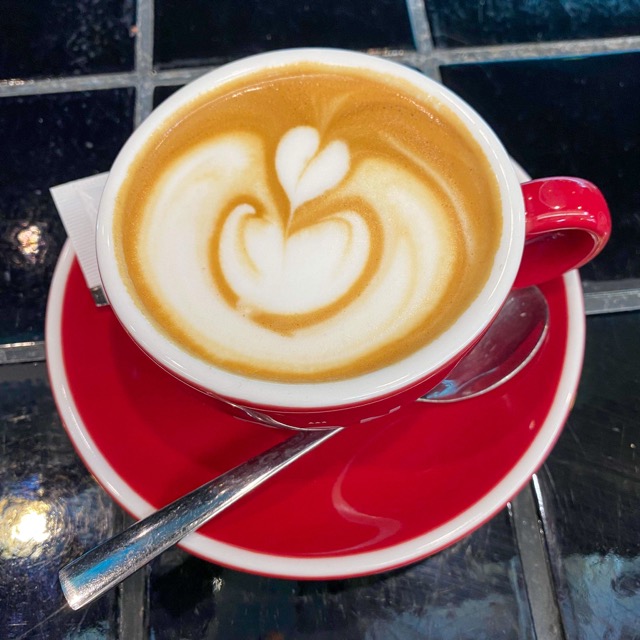
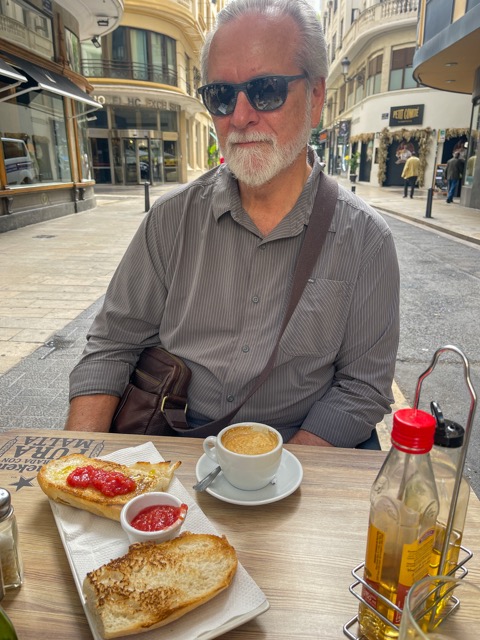
El Almuerzo – Brunch
Even though Google Translate will tell you that “almuerzo: means “lunch” in English, this is not correct. Breakfast #2 would be a better description for this meal which is from 10:00 to 11:00 AM (workers and school children all have a mid-morning break at this time). In Valencia, a typical el almuerzo is a light meal such as a bocadillo (small sandwich on a baguette) or cocas (a type of individual Spanish pizza with no cheese). The accompaniments can include nuts, olives, sausages, serrano ham, or chorizo and cheese. Once again, a small alcoholic beverage such as beer or table wine is often included. One can finish the meal with cafe con leche or cortatdo. It’s important to remember that drinking coffee WITH your meal is not done. It is fine, however, to finish a meal with un café (espresso served with no milk), un cortado (espresso with a little milk), or café con leche (espresso with more milk). Just don’t drink it while you’re eating.
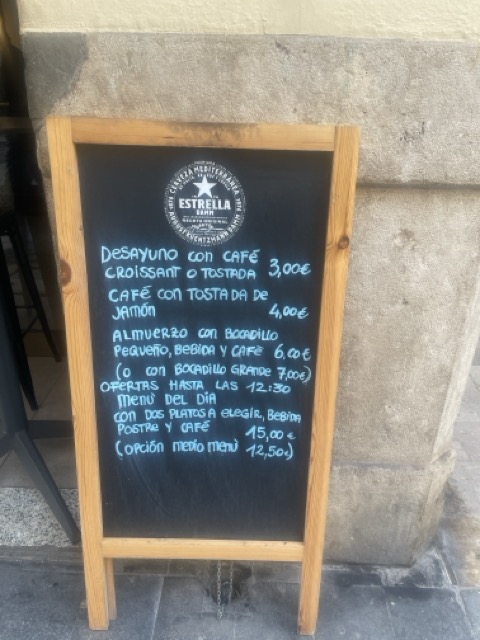
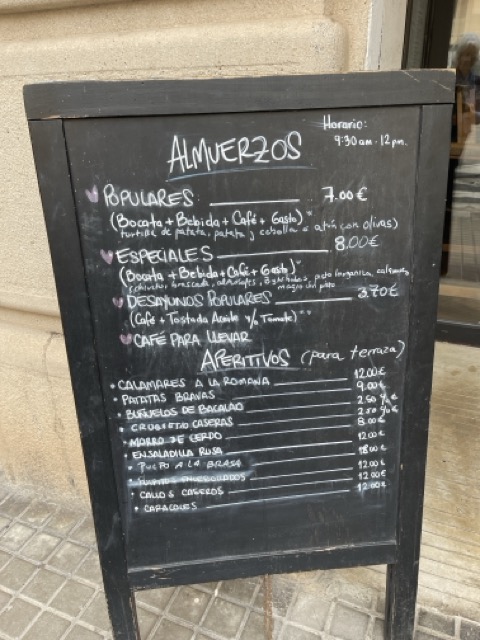
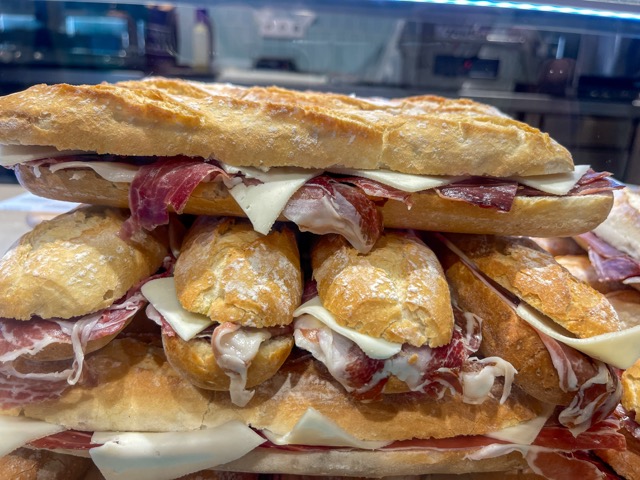
Vermú – Vermouth
Sometime around noon to 1:00 PM, it’s time to grab a quick snack and a drink to hold you over until lunch. You meet with friends to enjoy a few tapas and wash them down with vermú. You never order coffee with this meal. In fact, I’ve seen signs that say “A partir de las 12:00 horas, ya no se hacen cafés. Disculpen las molestias.” which means “From 12:00 on, we don’t make coffee. Sorry for the inconvenience.” While considered a sacred time of day, especially in Barcelona, the vermouth hour Vermouth hour is can be any time before a meal nowadays. (This is the optional sixth meal of the day.)
La Comida – Lunch
Finally, it’s lunch time and this one is sacred! The largest meal of the day, it is eaten between 1:30 – 3:00 and usually includes multiple courses. Spaniards believe in taking their time and enjoying their meals, so la comida can easily last two to three hours. A typical la comida includes a starter (a salad or a plate of jamon, cheese, olives, and bread), a main course of grilled meat or fish, paella, or pasta. A bottle of wine is a must and there’s always a dessert course.
La comida is such an important Spanish mealtime that stores, businesses, schools, and offices close from about 1:30 PM to 4:30 PM. People take time to enjoy their lunch and possibly take a siesta. If you need something from a store (other than the large department stores), you must get it before 1:30 PM or after 5:00 PM. In the tourist areas some restaurants keep “crazy” hours just for the tourists and serve “lunch” starting at around noon. Most local restaurants, however, don’t start serving lunch until at least 1:30 PM and many don’t open until 2:00 PM.
The Menu del Dia tradition – Menu of the Day
Apparently, in the 1960’s and 1970’s, General Franco issued a decree that required all restaurants throughout Spain to provide an affordable meal (charging no more than the typical hourly wage) for workers on weekdays. The tradition lives on. Even today, it’s easy to find a 3-course mid-day meal for around €10-20. Often, this includes a glass of wine or beer and coffee (after the meal). The choices are typically written on a chalkboard on the sidewalk or on a piece of paper tacked up in the restaurant.
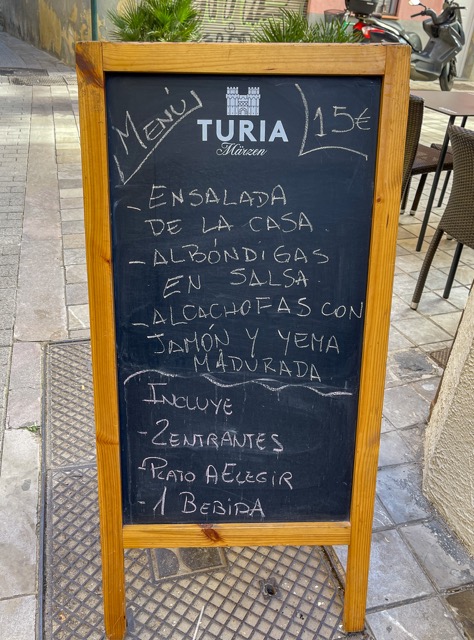
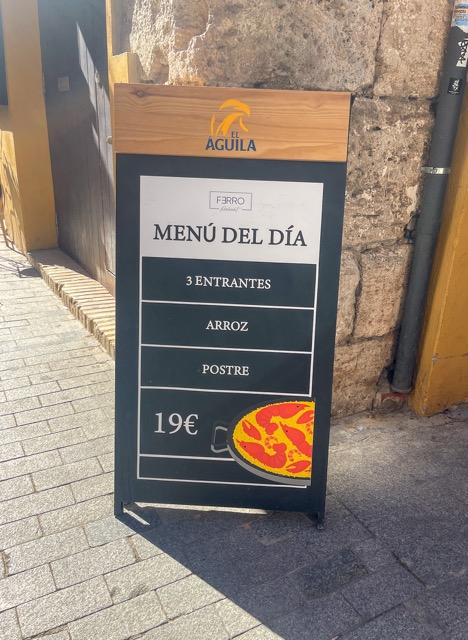
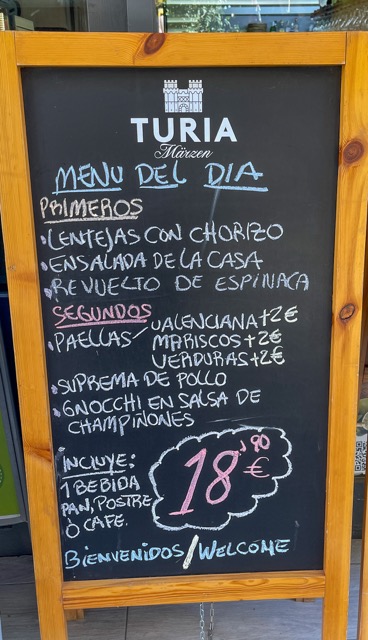
Just a quick note about some paella rules: Paella is only eaten at lunch, never for dinner. It is never cooked in individual portions and it should take a long time to arrive at the table. Oh, and meat and seafood should never be mixed together.
La Merienda – Late-Afternoon Snack
La merienda, usually between 5:00-7:00 PM, may seem unnecessary but remember, dinner is eaten very late in Spain. So, to hold one over, a small snack is required. This can be a savory bite such as a bocadillo, a tortilla (a Spanish omelet with potatoes and onions), or calamari (grilled or fried), and as always some of that famous Spanish jamon (ham). Alternatively, one can choose sweets such as bixocho (sponge cake), cheesecake, or a churro with dipping chocolate.
This little meal, or rather snack, is still taken quite seriously even for school children. When school is out, parents will ask their kids, “Quieres merender?” (Do you want to snack?) Of course, no kid ever refuses, and their merienda can include bread, biscuits, chocolate milk, or fruit. With dinner still several hours away, this could be important!
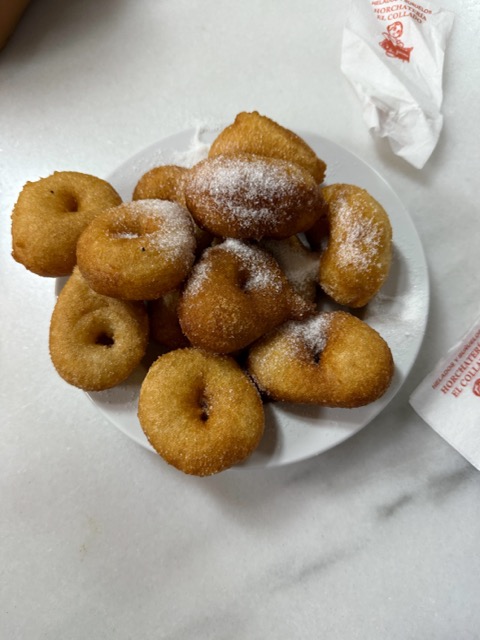
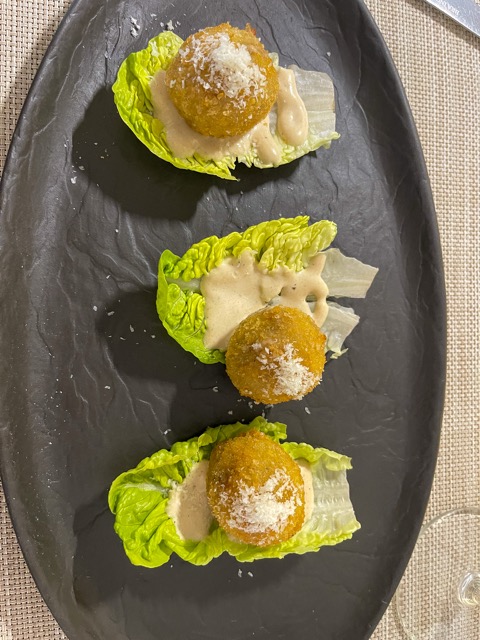
La Cena – Dinner
Dinner in Spain is eaten at about 10:00 PM throughout the week and even later weekends. The kitchens in virtually all restaurants close around 4:00 PM and don’t open again until 8:00 – 8:30 PM. Typically, a lighter meal, dinner might include a salad, soup, cold cuts, cheese, and sometimes a small serving of fresh fish or meat served with potatoes or vegetables. A light dessert of fresh fruit is a typical dessert.
These traditions are a part of what makes Spain such a pleasant and laid-back country to live in. A common expression here is “No pasa nada” and a rough translation might be something like, “Relax, don’t take it all too seriously, here, have some olives.”
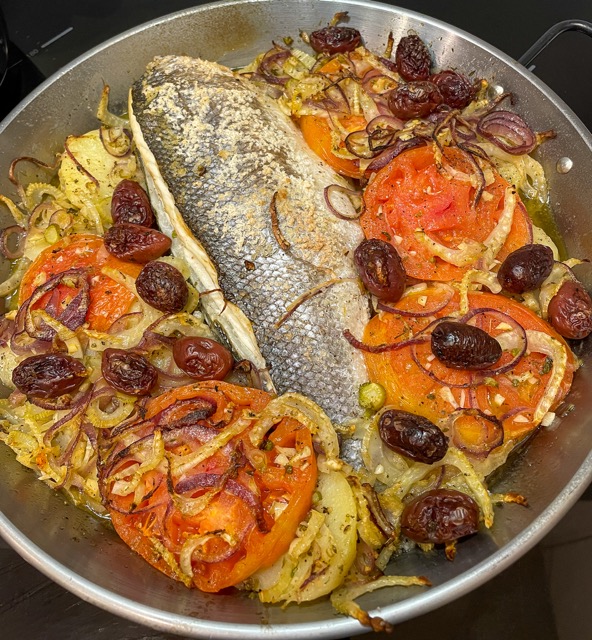
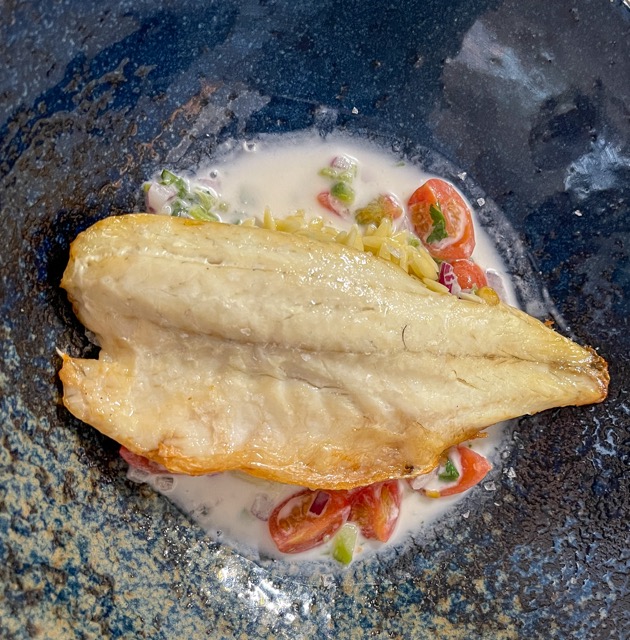
Sobramesa
Relaxing and socializing after a meal is a Spanish tradition they call sobramesa. This is particularly true after lunch (La Comida). Sobramesa is about prolonging a meal because you’re having such a good time with your friends that you don’t want it to end.
Tapas
You might be wondering about tapas. When are tapas eaten? Anytime. All the time. A tapa is a small portion of food that is served alongside an alcoholic beverage (are you noticing a pattern?) such as a beer or wine. You might enjoy several tapas as a full meal, or just one to whet your appetite for a large dinner. And, of course, tapas are an excuse to socialize (another pattern?). Some of my favorite tapas are garlic shrimp, patatas bravas (fried potatoes with spicy sauce), small green padron peppers, croquettes filled with meat or seafood, jamon and cheese in countless concoctions, boquerones (marinated anchovies), torrezno (crispy fried pork skin), and pinxtos (beautifully arranged ingredients atop slices of toasted bread).
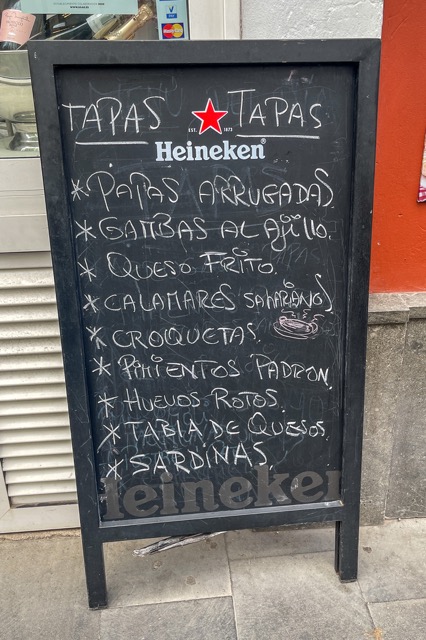
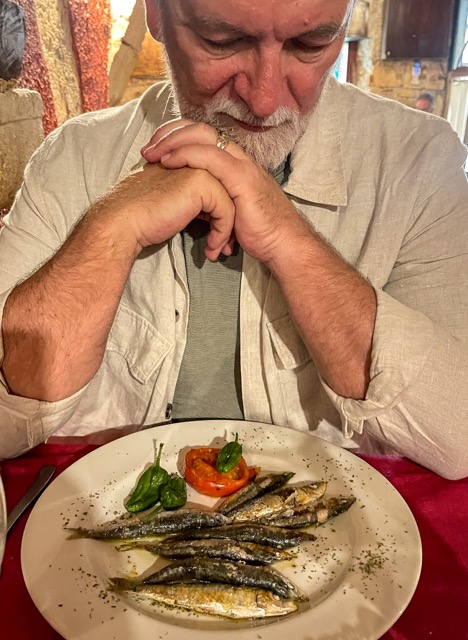
Is this healthy?
You might be thinking that the Spanish approach to eating sounds like a health nightmare. So, I checked. Recent data ranks Spain 9th in the world for longevity (the U.S. is 48th) and Spaniards live longer on average than any other European. The incidence of obesity here: less than half of the U.S. rate. But what about all that drinking? One local employer, asked about the sobriety of his work force declared, “My employees are never drunk! Of course, they’re never entirely sober either.” Despite this, the rate of alcohol dependency is more than 5 times lower in Spain than in the U.S. Maybe these Spaniards are on to something!
The Restaurant Experience
Restaurant culture is quite different in Spain compared to the U.S. You know the drill in the U.S. – servers come to the table, introduce themselves, tell you they are going to “take care of you”, and ask if you are ready to order. Then, they are attentive throughout your meal making sure to ask, “is everything OK?” and offering refills on drinks. In the U.S., we often think of good service as being quick – bringing your food out quickly, making sure you get your check quickly, etc.
This behavior would be considered rude in Spain. There is never a rush by the restaurant to “turn” the table. A server would never be so rude as to interrupt you to ask if you are ready to order or if everything is OK. Typically, the server will not come to your table to take your order until you signal that you are ready to do so. To do this, you look in their direction, catch their eye, and motion to them to come over. The check will never be delivered until you specifically ask for it.
Mealtime in Spain is about gathering with family and friends. It’s a sense of community and belonging that nourishes the soul as much as the body and we know that social connection plays a major role in healthy aging.
So, there you go, now you know how to eat like a Spaniard! As I said, we’re doing our best to get used to this routine and it’s going well. It’s a quite pleasant lifestyle that supports a relaxed pace of life and focuses on really enjoying your food.
Buen Provecho!
Simply translated: enjoy your meal. But there’s a bit more to it when we break it down. Buen means good and provecho means profit or benefit. The sentiment: “May you benefit from this meal!”
About Us
Welcome to our little corner of the world where we invite you to embark on exciting journeys with us!
We’re Ed and Bonnie, a duo passionate about exploring the world and experiencing its wonders. Our love for travel isn’t just about discovering new places; it’s about sharing those moments with cherished family and friends like you.
Our hope is that you will feel like you’re right there with us, sharing in the excitement and wonder of each destination. Better yet, let’s plan a rendezvous somewhere wonderful! Learn more

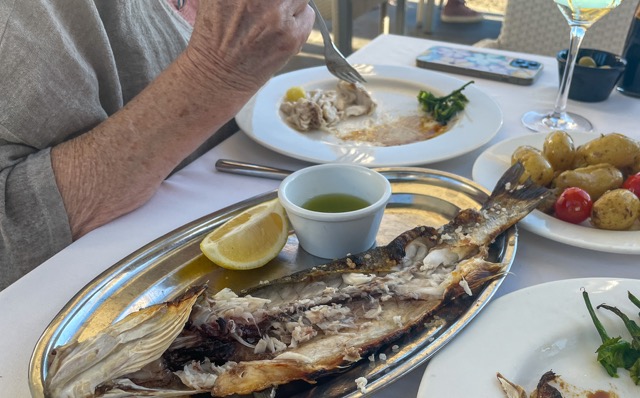
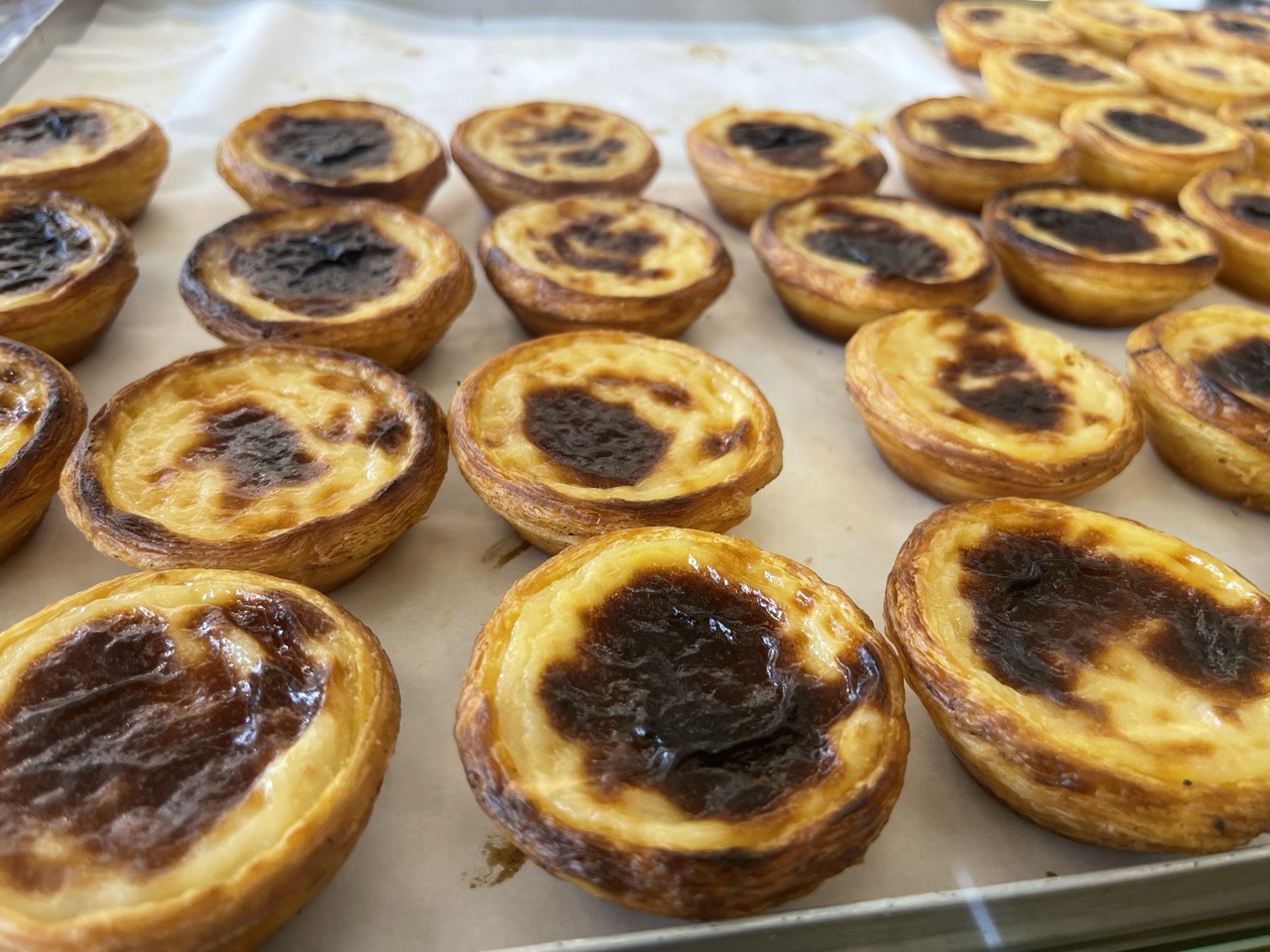
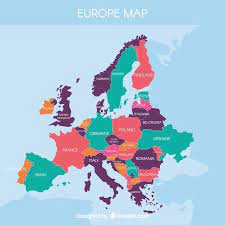
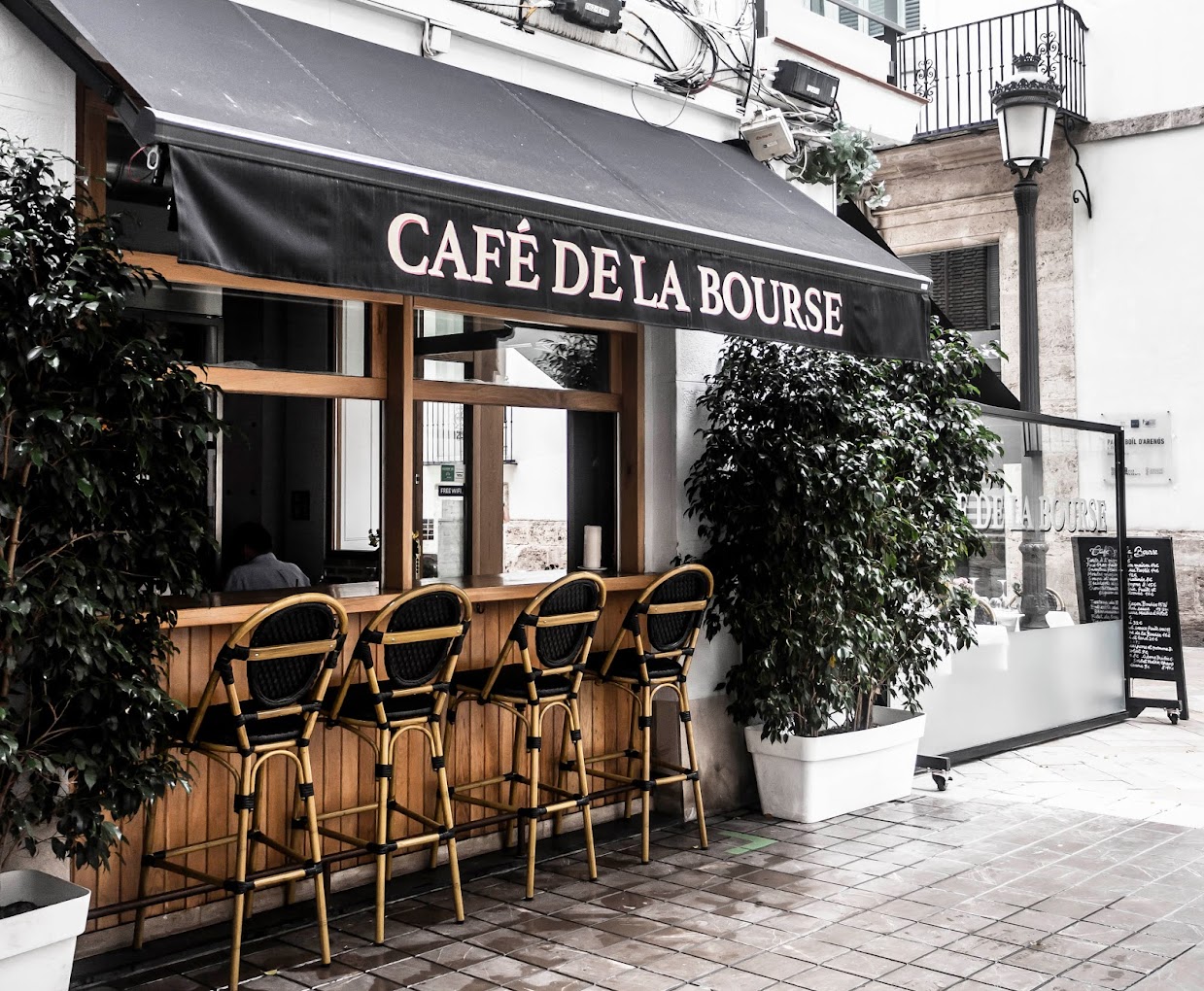
Hi from Huntington Beach!! I’m enjoying your trip! I’m enjoying the memories of being in Spain.. we were in a small little town and they had the running of the bowls and people running in front of them. It was exciting and scary at the same time. I love the tapas. I remember Andrea was with us and we were in a small group and there were three older women and they really took to Andrea. They wanted to adopt her. check out the crafting and knitting the paintings weaving I’d be interested in reading about that.. be glad you are where you are. It’s not fun to be in America right now. In fact it’s pretty scary but I have faith will bounce back after all. This damage is done. Hugs, Pam.
Once again, you indulge us in a day of beautiful food and company. We admire this lifestyle and have experienced something similar in the Greek islands and rural Italy, especially the leisurely shared meals. Your photos evoke true Mediterranean dishes that we imagine taste as delicious as they look! (+ all that sipping throughout the day must mellow it all out!). Your life feels like a different universe right now as we, individually and collectively, try to forge our way through all the Chaos #47 has caused an on a relentless daily basis! Large and small protests (blue and red) are breaking out throughout the country daily and gaining momentum! At some point, “the center will not hold.” As in Critical Mass. We recognize first hand the Strength in Community!
Continue to savor every moment and know that you are lucky to be far from the fray, at least for now! Jo and Naan xox
Love your commentary on meal time in Spain…such delightful writing that engages one in your food adventure. Have fun!
Wonderful on all counts and we are envious! Enjoy every taste and sip and know that you are Lucky to be in Spain right now! Our lives are full of anxiety and fear for the oppressed as TP strikes another gut punch every single day! We are protesting as best we can–The center cannot hold. J&N
This made me hungry! The photos alone are sumptuous